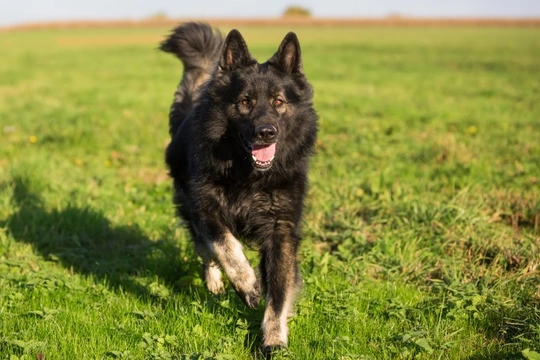
Ehrlichiosis Infections in Dogs
Ehrlichiosis is an infection that dogs can get when they are bitten by ticks carrying bacteria. It is a rickettsia infection and one that can be caused by two organisms called Ehrlichia canis and Ehrlichia lewinii. The bacteria invades white blood cells and starts to destroy them causing all the damage to a dog’s system. In the United States, studies have shown that certain breeds are more at risk of developing a more severe and therefore chronic form of the ehrlichiosis infection than other breeds which includes both the Doberman Pinscherand German Shepherd, but why this is so remains unclear.
Symptoms Associated with the Infection
When dogs develop a Ehrlichiosis infection, there are certain signs to watch out for that shows there is something wrong, but it's important to bear in mind that there are different stages to the infection which are as follows:
Acute Stage - dogs typically start to show symptoms of there being something wrong with them around one to three weeks after they have been bitten by a tick carrying the bacteria. The symptoms to watch out for include the following:
- Lymph nodes are enlarged
- Lethargy
- Weakness
- Depression
- Loss of appetite
- Difficulty breathing
- Swollen limbs
However, a dog might have the bacteria in their systems for months or even years without showing any signs of there being something wrong with them.
Chronic Stage - dogs show very definite signs of being ill and this includes having the following symptoms:
- Strange, abnormal period of bleeding
- Persistent nose bleeds
- Very severe loss of weight
- Fever
- Difficulty breathing
- Painful, swollen joints
- A lack of coordination
- Tilt of the head
- Eye pain
- Anaemia
- Kidney failure
- Seizures
- Paralysis
Diagnosing the Condition
A vet would need to have a dog's full medical history and ideally be told how any onset of symptoms first manifested themselves. The more information an owner can give the vet, the better. A vet would thoroughly examine a dog suspected of suffering from an ehrlichiosis infection and would typically recommend carrying out the following tests which would help confirm a diagnosis:
- A complete blood count
- A full biochemistry blood profile
- A urinalysis
- A PCR test to isolate the DNA of the bacteria causing the problem
When dogs suffer from the condition, it usually means they have less platelets and neutrophils in their blood stream which as result means they are often anaemic. However, the number of lymphocytes in the blood are elevated which is typical when the infection is severe. A urinalysis would confirm if a dog has protein in their urine which could be a sign they are suffering from inflammation of their kidneys. A vet would also want to establish if a dog has any of the following:
- Haemorrhages within their eyes
- Inflamed lungs
- An enlarged spleen
- Inflammation of the brain
- Inflammation of spinal cord
Treatment Options
The main goal of any treatment is to eliminate any bacteria from a dog's system and to stabilise their condition. This would involve managing any complications that are often associated with this type of infection which includes anaemia and any other bleeding disorders that go hand in hand with the disease. Should a dog's condition be deemed severe, they would need to be hospitalised and given fluid therapy and if necessary blood transfusions.
Living with a Dog with an Ehrlichiosis Infection
Dogs that are recovering from an infection need to be closely monitored and kept as quiet as possible. Exercise should be restricted and if any bleeding occurs, a dog would need to be taken back to the vet as a matter of urgency so their condition can be reassessed. Dogs usually respond well to treatment providing their condition is caught early enough. However, it is worth noting that the harmful bacteria can remain in a dog's system for a long time which means a little later down the line, they might show signs of being ill again.
Prevention
The only real way of preventing a dog from developing a ehrlrichiosis infection is to ensure they are always well protected against ticks using the most effective products available which tend to be the ones prescribed by vets.



